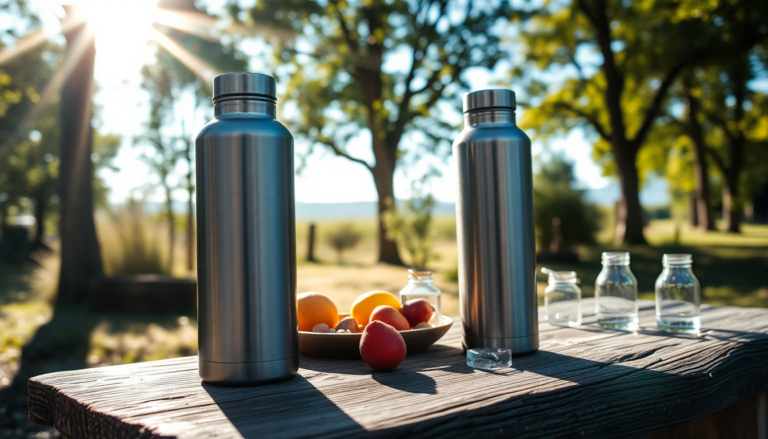Argomenti trattati
In today’s fast-paced world, staying hydrated is more important than ever. But did you know that the type of water bottle you choose can significantly impact your hydration habits? As someone who dives deep into digital marketing analysis, I often look beyond just the aesthetics of products to their functionality and performance metrics. In this article, we’re going to take a close look at two popular brands: RTIC and Yeti. Both have built a devoted following, but how do they really compare in terms of design, usability, and performance?
Emerging Trends in Hydration Solutions
The market for insulated water bottles is booming. More and more consumers are leaning towards reusable options that combine convenience with sustainability. This shift is evident with brands like RTIC and Yeti, which cater to a growing audience that values not just performance but also a lifestyle centered on health and environmental awareness. Founded in 2015, RTIC is a newcomer in this space, while Yeti, established in 2006, has been a major player for quite some time. Both brands offer products that appeal to fitness enthusiasts and everyday users alike, all seeking reliable hydration solutions.
Analyzing Data and Performance
So, what about performance? Both RTIC and Yeti claim to excel in insulation capabilities. The RTIC Journey boasts the ability to keep your drinks hot or cold for up to 24 hours. On the other hand, while Yeti’s Rambler is also known for its excellent temperature retention, it doesn’t specify exact time frames. In my experience, effective performance metrics go beyond just insulation times; they also consider how practical the bottle is to use. Key factors like the structural integrity of the lid, ease of transport, and overall design play crucial roles in user satisfaction.
If leak-proof capabilities are high on your priority list, RTIC might just be your best bet with its secure screw-on lid. Yeti, however, uses a sliding magnet mechanism for convenience, which may not reassure everyone when it comes to avoiding leaks. Additionally, the dimensions and weight distribution of these bottles are vital, especially for those who plan to carry them during outdoor adventures or workouts.
Detailed Case Study: RTIC vs Yeti
Now, let’s dive into a detailed comparison of these two products based on real user experiences and performance metrics. The RTIC Journey and Yeti Rambler exemplify their respective brands. In terms of design, the RTIC is taller and slimmer, making it easier to grip and pour, especially when full. In contrast, the bulkier Yeti offers a sturdy feel that many users love.
During my testing, I discovered that the RTIC’s flip-up straw feature is a game-changer, minimizing spills for those who like to drink on the go. Conversely, the Yeti requires more tilting to sip from, which can lead to accidental spills when you’re nearing the bottle’s bottom. If ease of use is your priority, RTIC might have the upper hand here.
Practical Implementation Tactics and KPIs
When choosing the right insulated water bottle, it’s important to consider your hydration habits and how you plan to use it. For those who value portability and leak-proof features, RTIC could be the way to go. However, if you’re looking for something that’s easy to clean and has a wider mouth for filling, Yeti might catch your eye.
As with any product, keeping an eye on key performance indicators (KPIs) such as user satisfaction, durability over time, and insulation effectiveness can provide valuable insights into long-term value. Regularly reviewing customer feedback and performance data allows you to make informed decisions tailored to your specific needs.

